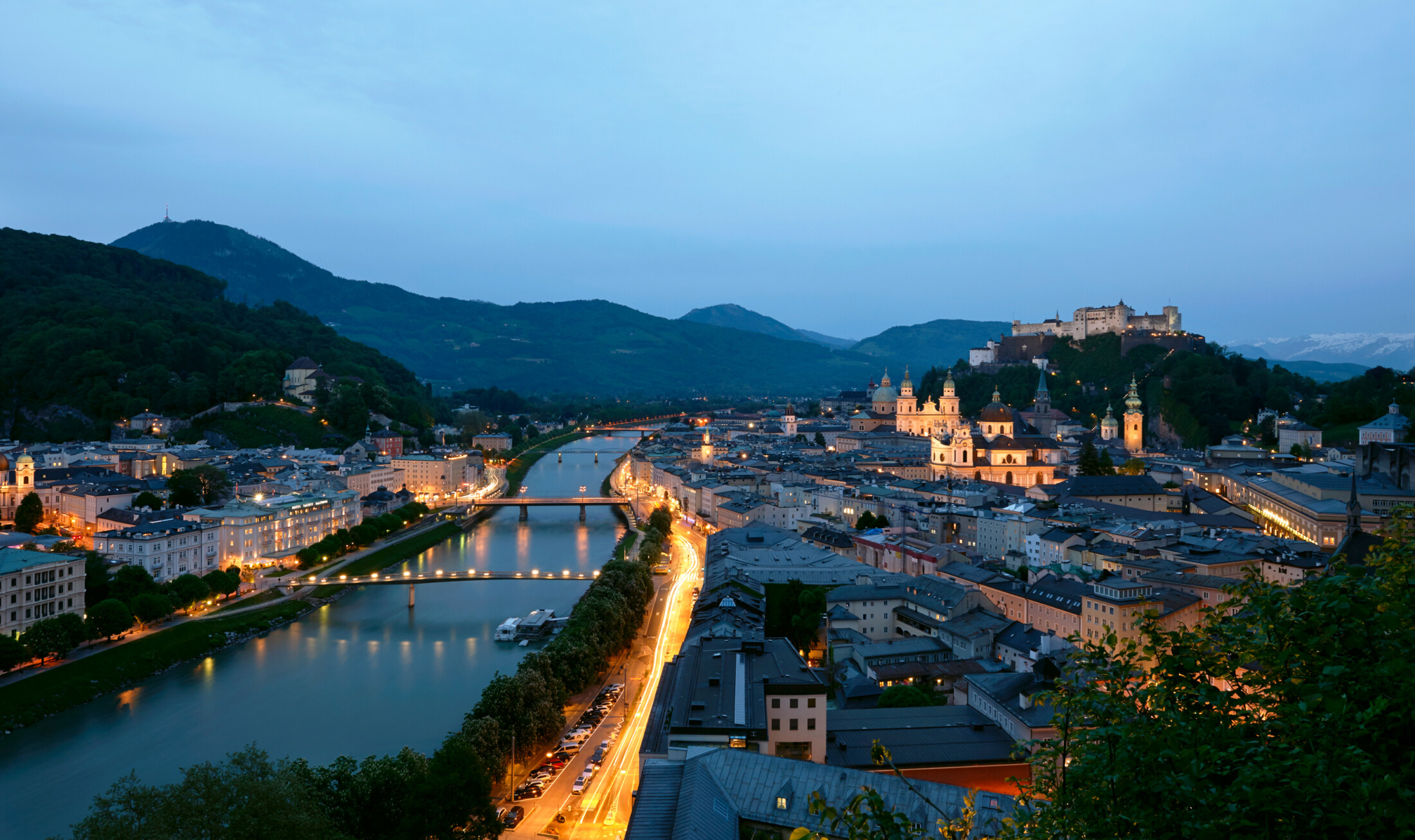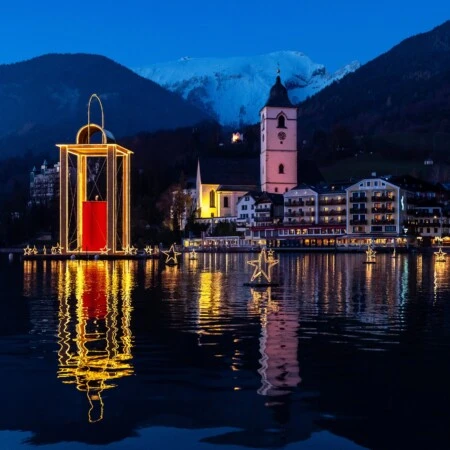Each summer, Salzburg turns up the volume and steps into the spotlight. For six weeks, the Salzburg Festival sweeps through the baroque city in a celebration of culture and performance – the entire town pulsing with music and anticipation.
Set in the birthplace of Wolfgang Amadeus Mozart, the festival is steeped in history. Church bells echo through medieval streets. Notes from rehearsals spill from stone courtyards. It is more than a music festival – it is an illustrious showcase of opera, concerts and drama.
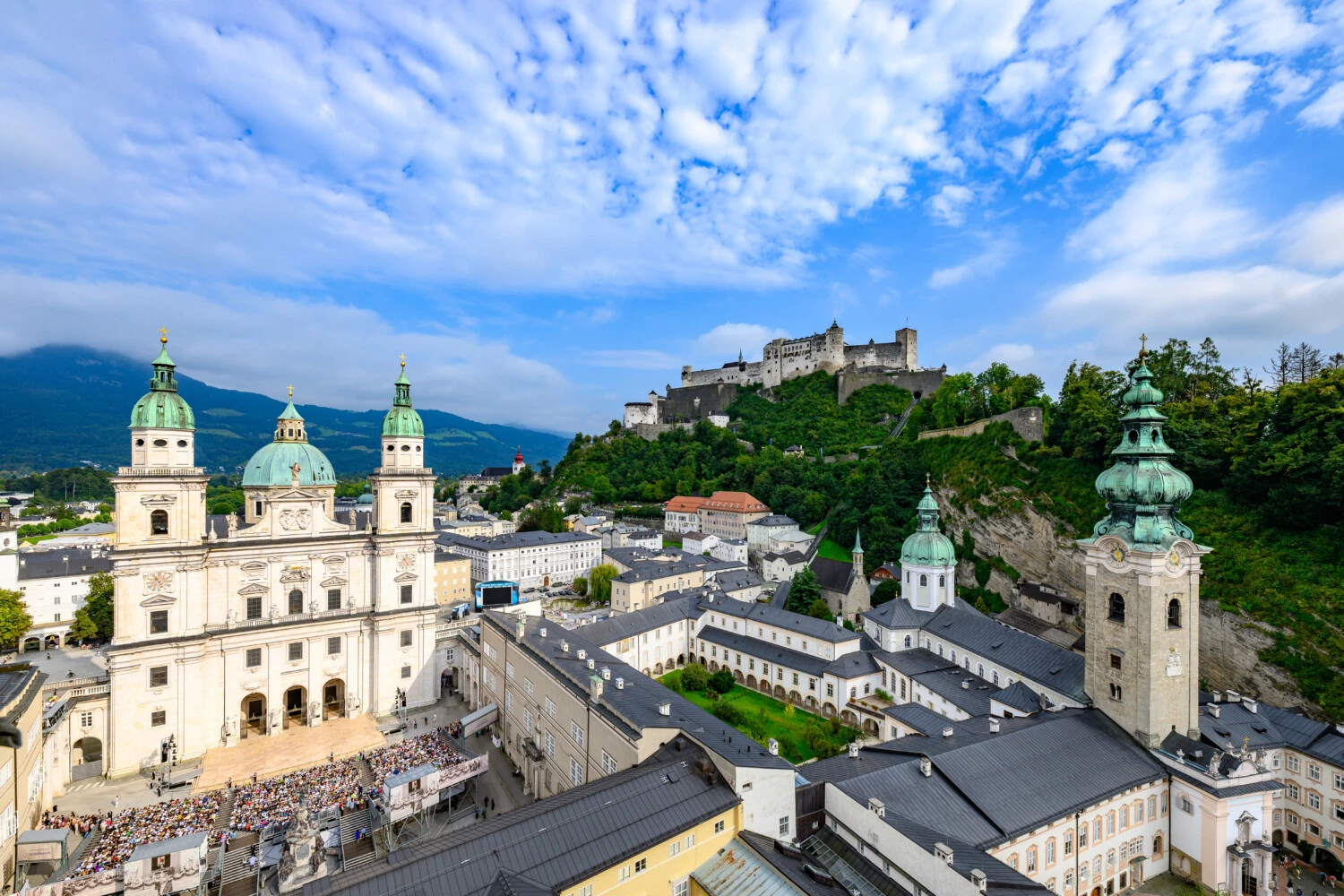
From humble dream to cultural icon
The Salzburg Festival began in 1920 as a bold act of artistic revival. In the wake of World War I, the city set out to heal through culture.
The first production, Jedermann (Everyman), was performed beneath the cathedral’s baroque façade and drew a captivated crowd. The play has become the most iconic production of the entire festival. Performed outdoors at the Domplatz and overlooked by the illuminated Hohensalzburg Fortress, it is an unmissable highlight.
The festival has blossomed into one of Europe’s most prestigious cultural events. It welcomed the von Trapp family in 1936, weathered wartime silence and reemerged as a beacon of Austria’s cultural soul.
Through it all, the same spirit remains: a celebration of human creativity through shared, live performance.
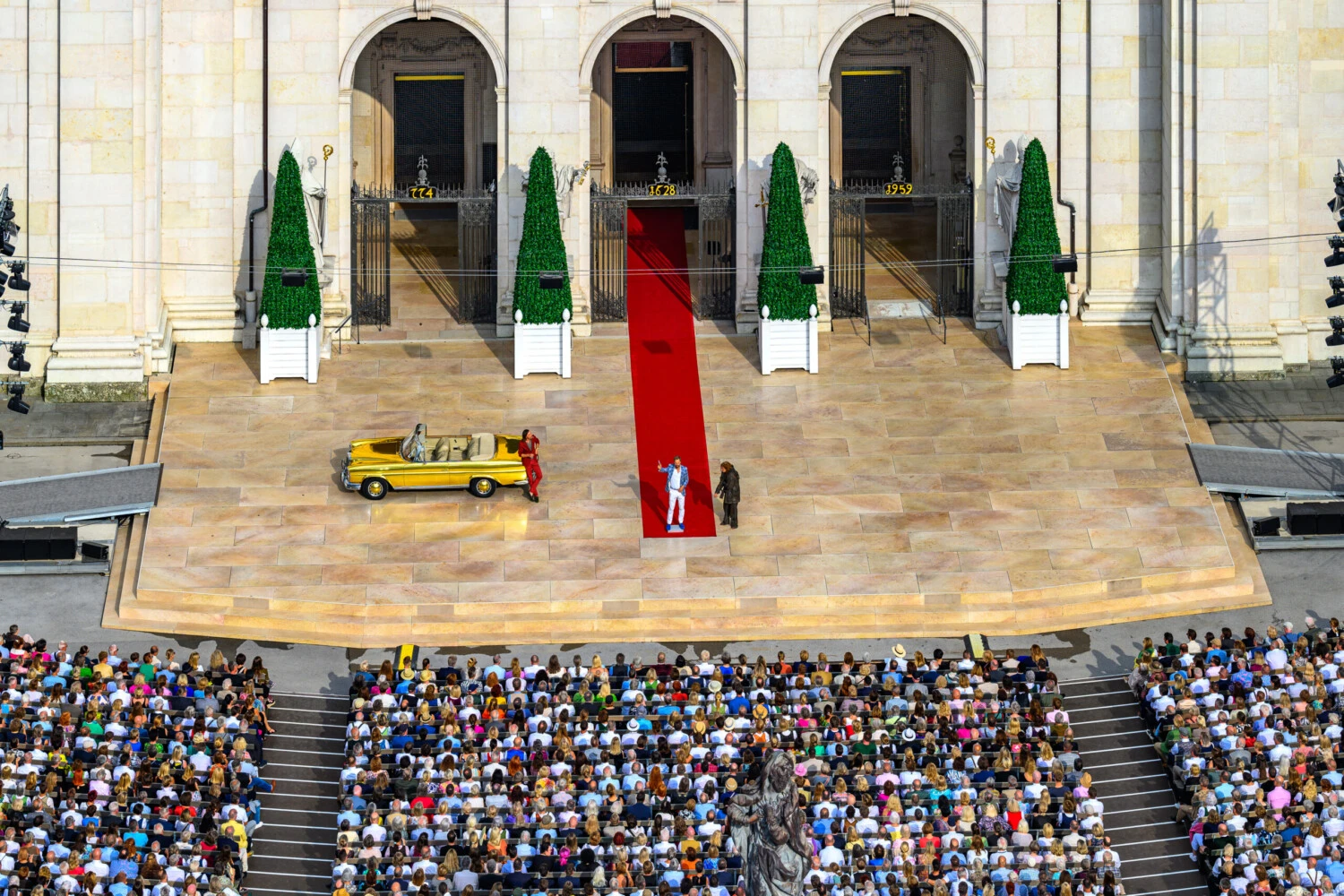
Music, drama and Mozart
One name is celebrated above all others at Salzburg Festival: Mozart. His operas are regular features of the programme, performed by the world’s finest orchestras and vocalists. Hearing Don Giovanni or The Magic Flute in his hometown is an emotional experience – a rare confluence of place and performance.
Yet the repertoire stretches far beyond Mozart. You might find a Beethoven symphony at the Grosses Festspielhaus, a modern chamber recital in the Haus für Mozart, or a bold, immersive staging of Wozzeck at the Felsenreitschule.
The Ouverture spirituelle opens each season with sacred and spiritual music, while initiatives like the Young Conductors Award spotlight fresh talent from around the world. This blend of legacy and experimentation gives the Salzburg Music Festival its richness – honouring tradition while daring to innovate.
While Salzburg’s classical music is rightfully renowned, the festival showcases a range of arts including orchestral concerts, opera, theatre and experimental works.

Stages carved into mountains
One joy of the Salzburg Festival is its venues – each as unforgettable as the performances they host. The Grosses Festspielhaus is a minimalist marvel carved into the side of the Mönchsberg, a famous mountain in Salzburg. With its vast stage and flawless acoustics, it sets the scene for the festival’s most ambitious productions.
If you have managed to secure tickets to one of Mozart’s grand operas, you might well find yourself seated in the heart of the mountain.
Next door, the Felsenreitschule offers drama – literally and architecturally. This 17th-century riding school, built into the mountain’s rock face, features three tiers of arcades and a wide, open stage. Watching a performance here – open to the night sky, framed by stone – is a memorable experience.
More intimate settings include the Haus für Mozart, ideal for chamber music and smaller operas, and of course the Domplatz, where Jedermann returns each summer to its spiritual home beneath the stars. These venues – grand, historic and alive – transform Salzburg itself into the festival’s most exquisite backdrop.
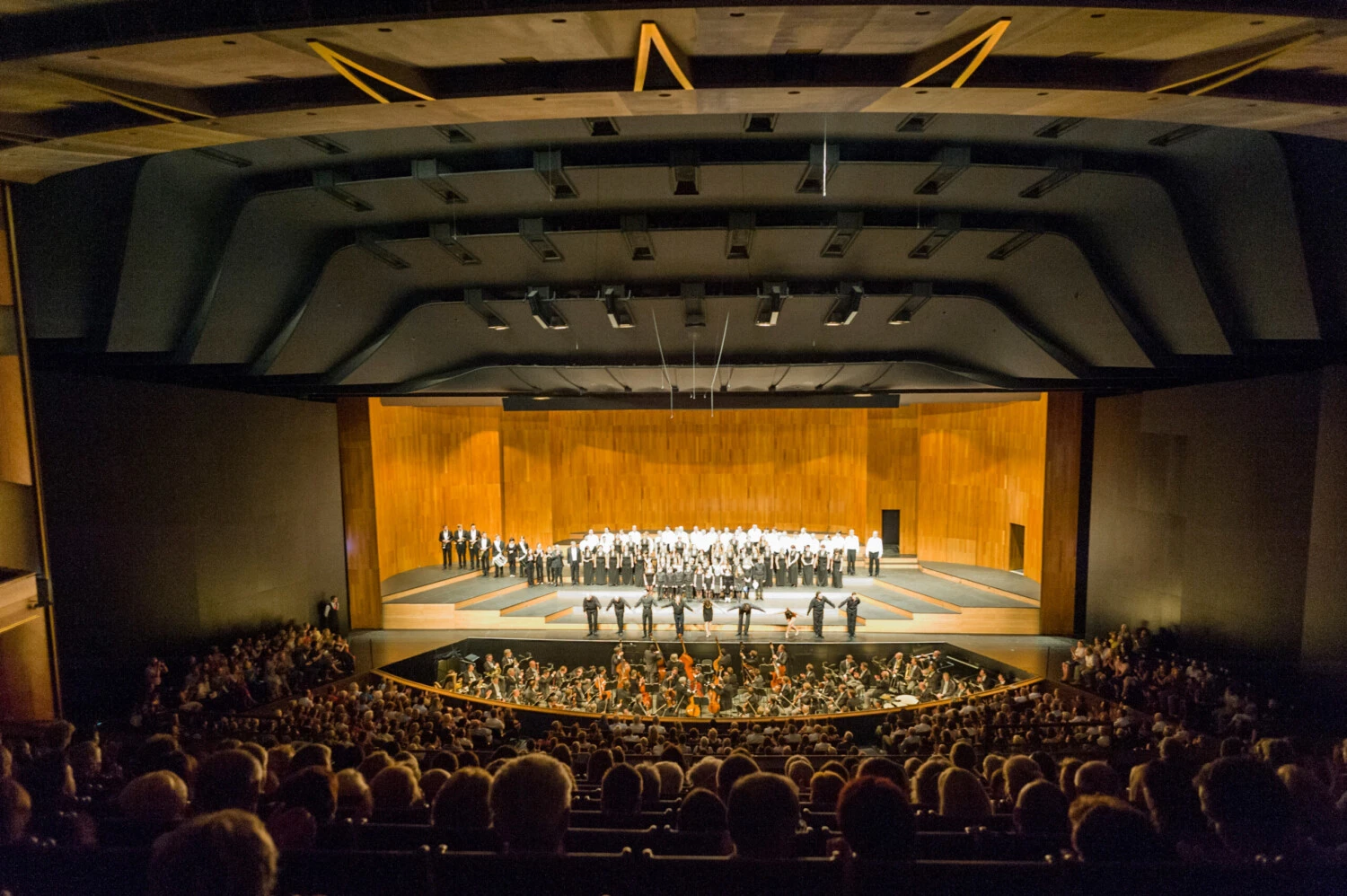
The festival atmosphere
Being here is about more than the Salzburg Festival schedule – it is about the unique atmosphere.
By day, the Old Town bustles with visitors discussing Mahler over coffee or browsing antique shops between matinees. As evening falls, the pace slows and the ritual begins.
Evening gowns and tuxedos are freshly pressed. Cobblestone streets become red carpets. Intermissions spill into marble foyers or candlelit courtyards and conversations flicker between strangers. Salzburg’s cafés and bars become extensions of the stage – social, stylish and full of music.
And always, there is the city. Baroque facades bathed in golden light. The silhouette of the famous sight, Hohensalzburg Fortress, high above. The sound of music drifting from a window. You are inevitably moved by the setting, the timing, the grace of it all.
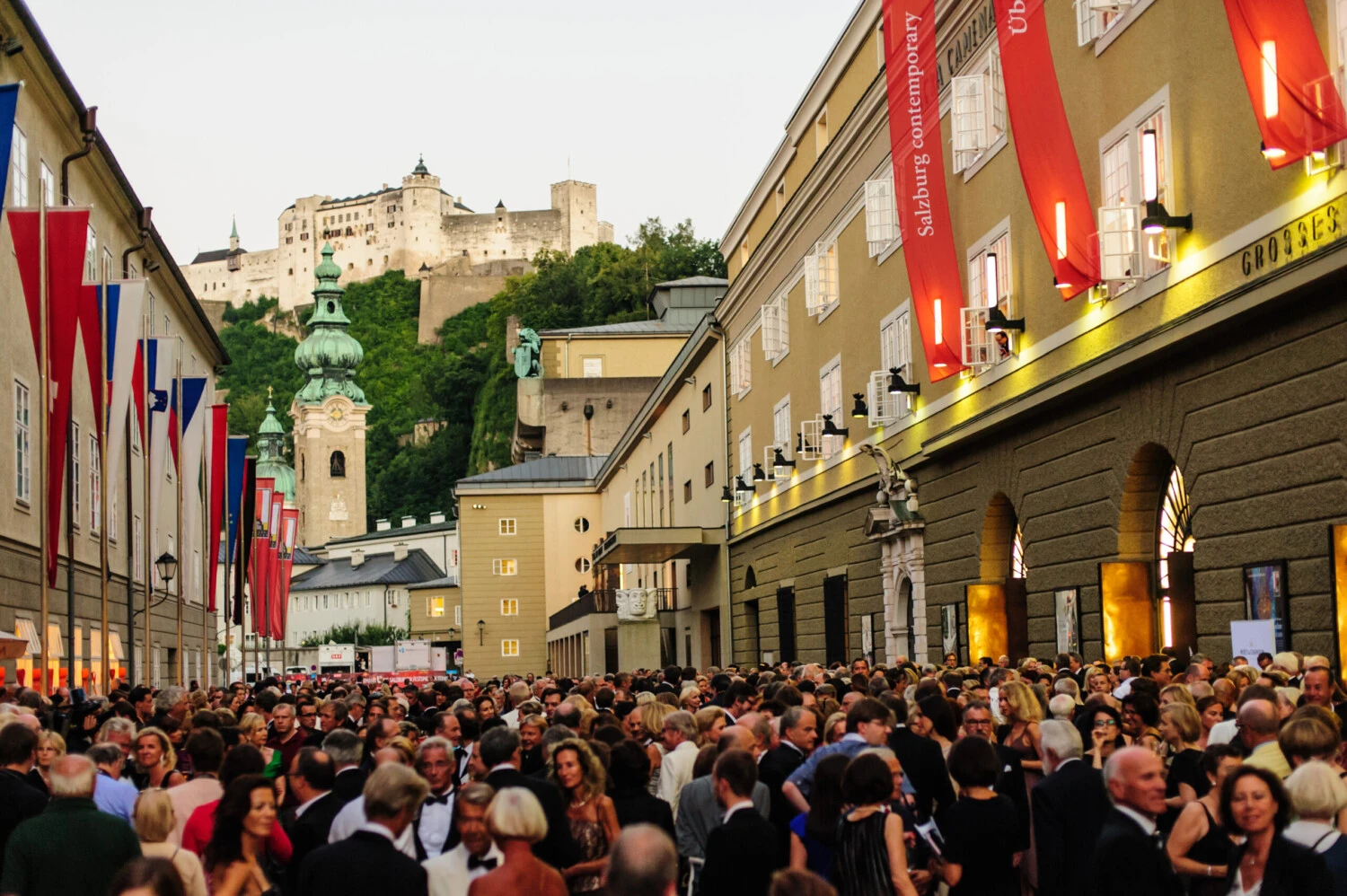
Explore the sound of the city
You do not need a ticket to feel part of the Salzburg Music Festival. Music spills from open windows, rehearsals echo through cobbled lanes and impromptu performances spring up in unexpected corners. Cafés host recitals, churches ring with sacred sound and the city itself becomes a kind of orchestra.
It is not just the festival that plays, it is the city of Salzburg. This immersive quality is a big part of what keeps visitors returning year after year.
What to do between performances
While festival shows are the highlight, Salzburg itself is a masterpiece of cultural sites, history and stunning natural beauty.
Start at Mozart’s Birthplace, a bright yellow townhouse on Getreidegasse that now hosts a charming museum. Here you will see the composer’s early instruments, family letters and childhood rooms. It is an intimate way to begin your journey into his world.
Ride the funicular up to Hohensalzburg Fortress, one of Europe’s largest medieval castles. The panoramic views of the city, the mountains and the Salzach River are breathtaking – and worth the gentle climb. Within the fortress, you will find exhibitions, museums and even occasional concerts.
Want to take it more slowly? Unwind with an indulgent treatment at the Sacher Health Club. Walk through Mirabell Gardens, where flowers bloom in precise symmetry and children reenact The Sound of Music’s famous “Do-Re-Mi” scene. Sip a cocktail at the Sacher Bar or stop for coffee at Café Sacher Salzburg, where Mozart and generations of artists once did the same, treating yourself to a generous helping of the Original Sacher-Torte.
These interludes between concerts create a rhythm of their own – a quieter harmony that connects you to the city and the centuries of music it has inspired.
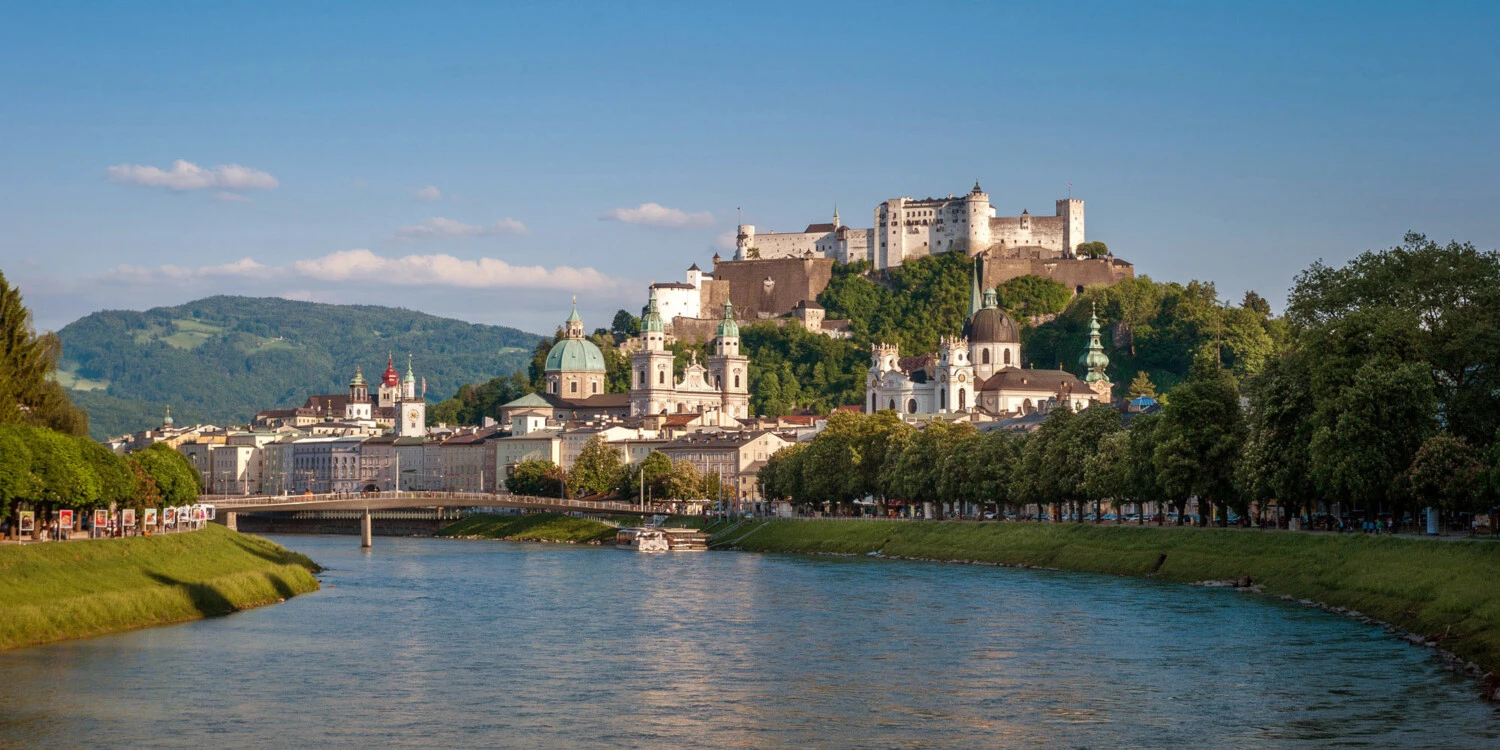
How to plan like a local
For a smoother festival experience, timing is everything. Many locals recommend arriving in Salzburg the day before your first performance, giving yourself time to settle in, wander the Old Town and pick up any last-minute tickets or tips.
Consider planning your performances around mealtimes, too: early matinees pair well with a long lunch in one of Salzburg’s shaded squares, while evening operas are best followed by a glass of Grüner Veltliner and a late dinner at Hotel Sacher Salzburg. If you are looking to extend your stay, the hotel is within walking distance of the festival’s main venues.
And if your schedule allows, book tickets for a morning concert. These are often more intimate, less crowded and reveal a different – sometimes even more magical – side of the festival.
FAQs
When are the Salzburg Festival dates?
The Salzburg Festival runs every summer from late July through August, and sometimes into early September. Exact dates vary slightly each year, so check the official website for the current season’s programme. You can also check our own curated events calendar for things to do before, during, and after the festival.
What makes the Salzburg Festival so special?
Its legacy, its setting and its quality. The Salzburg Festival has featured the world’s greatest musicians and artists for over 100 years, staged in a city of breathtaking beauty and deep cultural roots.
How do I travel to Salzburg?
Salzburg is well connected and easy to reach by various means of transportation. You can fly directly into Salzburg Airport, which serves several major European cities, or use the larger international airports in Vienna or Munich, followed by a train or car journey.
If you are traveling by train, Salzburg’s central station is a major hub served by both high-speed and regional connections. High-speed Railjet trains run between Vienna and Salzburg multiple times a day, taking around 2.5 hours. This is the easiest and most scenic route, while driving takes around 3 hours. From Munich, frequent regional and intercity trains reach Salzburg in 1.5 to 2 hours. Driving takes approximately 1.5 hours depending on the traffic.
Major motorways also link Salzburg with key cities across Austria and Germany, making it easily accessible by car. Either way, make sure to plan ahead for festival season — it is a popular time to visit.
Are Salzburg Festival tickets expensive?
While premium seats in historic venues can command high prices, the festival is notably accessible. Affordable standing-room tickets and lower-tier gallery seats make it possible to experience world-class performances without the premium cost.
